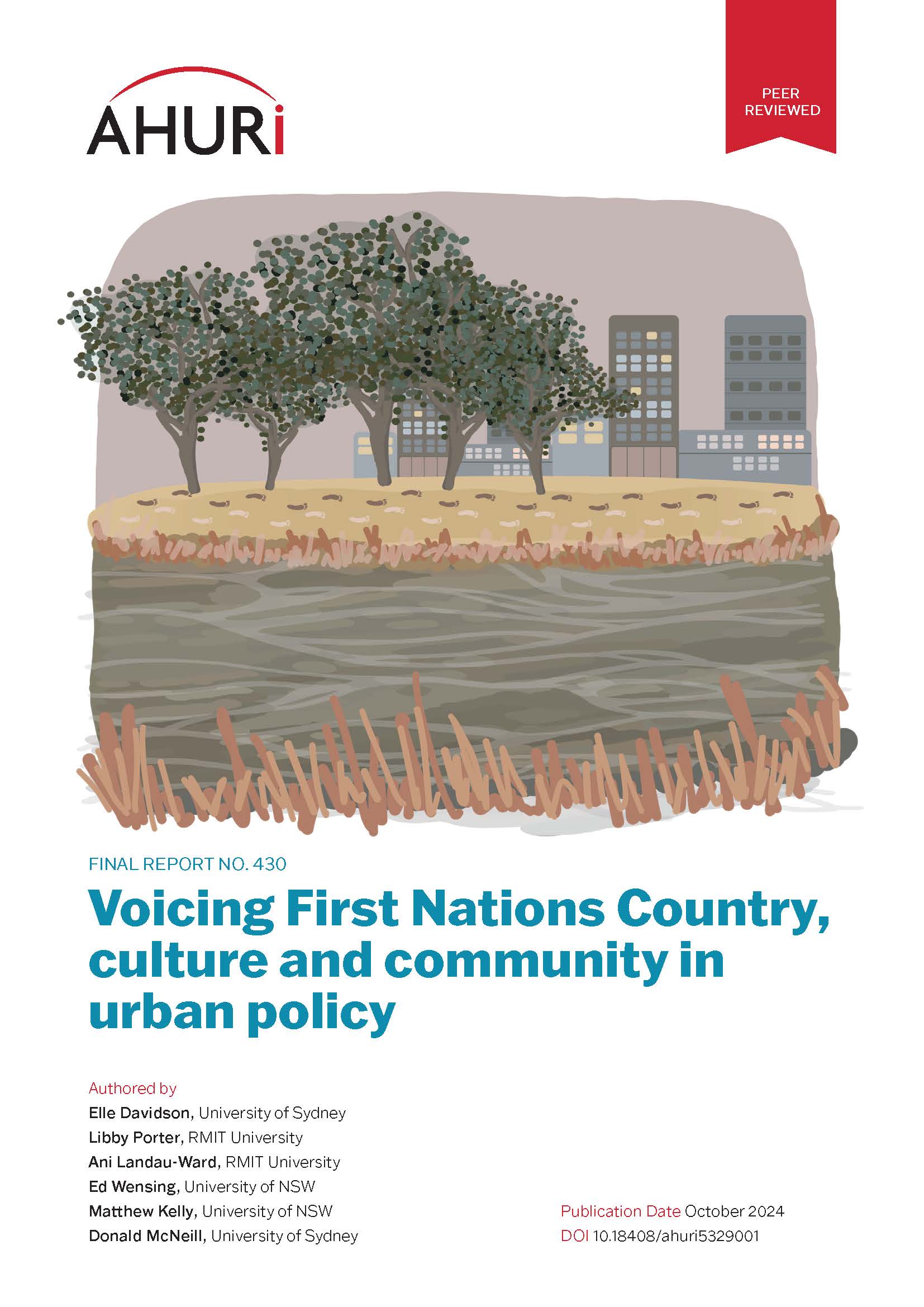
Traditional Custodian engagement in urban policy requires reset
24 Oct 2024
New AHURI research has found that current approaches to engaging First Nations peoples in urban policy and planning are placing an unreasonable and unsustainable burden, especially on Traditional Custodians. The report found that a change of relationship with Traditional Custodians, and a rethinking of current engagement approaches could create a more responsible process. It also found that Traditional Custodians need access to appropriate resources to fulfil their urban policy development obligations.
The research, ‘Voicing First Nations Country, culture and community in urban policy’, undertaken for AHURI by researchers from University of Sydney, RMIT University and University of NSW, examines the relationship of First Nations peoples in Australia to urban policy and planning, and looks at how to centre First Nations sovereignty, authority, knowledge, governance and agency as the starting point toward a more responsible relationship.
Traditional Custodians have cultural obligations to care for Country, even in urban areas
Traditional Custodians whose Country is now a built-up urban area see it as important to engage in urban policy and decision-making about development, planning, design and infrastructure provision because it matters to fulfil their ongoing cultural obligations to care for Country.
‘Despite urbanisation and the density of population settlement, private property and the complexity of legislation, policy and regulation imposed on Country, First Nations Traditional Custodians retain their connections to ancestral lands and their cultural obligations and rights to lands and waters,’ says lead author of the research, Elle Davidson of University of Sydney.
Lack of resources and unrealistic expectations put unrealistic pressures on Traditional Custodians
‘Governments are asking local planners and developers to consult with First Nation people with some level of engagement. This has the effect of intensifying pressure on Traditional Custodians,’ says co-Investigator Professor Libby Porter of RMIT University. ‘Often Traditional Custodian groups are small numbers of people, sometimes disparately located from each other, and universally poorly resourced. Where custodians have no recognised or established organisational body, everything is being squeezed in between other commitments and everyday life. This immediately establishes a significant resource differential between Traditional Custodians and governments and private organisations who have all the capacities derived from large institutions, such as budget lines, salaried staff, equipment and infrastructure, whereas Traditional Custodians without formal organisations often have none of these things.’
There are also often unrealistic expectations imposed upon First Nations communities who are ‘expected to be the experts on everything’. ‘Our research found Traditional Custodians are often under-resourced, stretched thin, and constantly suffering from consultation fatigue,’ says Professor Porter.
Current engagement approaches require rethinking to achieve better outcomes
‘Urban policy planning can be a tool for healing and repair between First Nations people and the broader Australian community,’ says Davidson. ‘Engagement can be used to create new opportunities—but current engagement approaches require rethinking and need to include building longer term relationships’.
‘Successful urban policy, planning and development that embraces First Nations people means starting building relationships early, long before a project requires engagement,’ says Davidson. ‘Trust must be built over time, unlinked to a particular agenda, output or key deliverable.’
Traditional Custodians need adequate support resources
Support for Traditional Custodians can also come from governments and other stakeholders coordinating internally on timeframes, projects and budgets. This will help lift the burden of policy engagement from the shoulders of Traditional Custodians and use existing institutional resources to build better links.
‘Building and sustaining relationships and creating new processes and models need to be supported with resources for Traditional Custodians. Dedicated resource structures that are secure, ongoing and transcend piecemeal project-by-project funding are essential,’ says Professor Porter.

